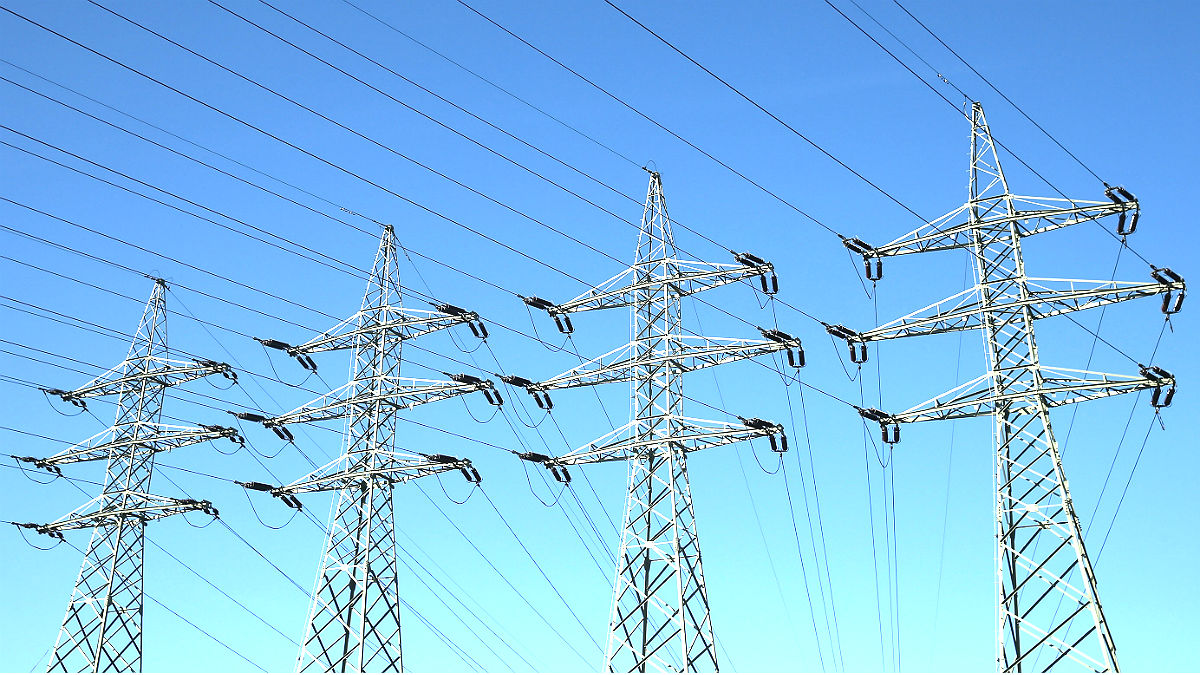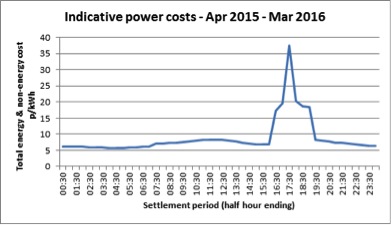Peak performance: how big businesses can save big money
Your company could make real savings by minimising energy use during a few periods of peak demand

As winter approaches and temperatures fall, demand for energy is rising and for many large corporate energy users, that means prices will rise too, adding to operating costs.
Calculating energy prices
As with any other commodity, energy prices are influenced by the balance between supply and demand: when demand is high, the price usually rises too. Prices vary over the long term as the seasons change, but also over the short term, rising each evening and falling away overnight.
The Week
Escape your echo chamber. Get the facts behind the news, plus analysis from multiple perspectives.

Sign up for The Week's Free Newsletters
From our morning news briefing to a weekly Good News Newsletter, get the best of The Week delivered directly to your inbox.
From our morning news briefing to a weekly Good News Newsletter, get the best of The Week delivered directly to your inbox.
Energy pricing, however, is also affected by a second factor: the cost of building the infrastructure that transmits it from the generator to the consumer. And this element of the price is also influenced by peaks in demand.
Building capacity to cope with the very highest levels of demand is expensive, and the additional capacity goes unused for much of the time. For this reason, the distribution and transmission networks increasingly set their charges based on the amount of energy businesses use during the periods of peak demand.
For larger customers, transmission costs are calculated based on their energy use on three of the highest days of demand each year, known as the Triads (see below). E.ON customers who use the Energy Toolkit to reduce consumption at these key times could therefore save a considerable amount of money.
How your business can cut its bills
A free daily email with the biggest news stories of the day – and the best features from TheWeek.com
Many larger businesses opt for "pass-through" contracts, in which the rates they pay for transmission and distribution costs aren't fixed up front, but instead calculated later based on how much energy they use in these periods. For these customers, any change in consumption can have an immediate impact on the size of their bill.
Even large customers on fixed contracts can benefit, as these customers can also manage their peak energy demand. Energy suppliers will typically take account of a business's consumption profile when calculating its fixed energy price, so if your company reduces its peak consumption it may be offered a cheaper contract at its next renewal.
Managing your company's demand
The first step towards optimising the way in which your business uses energy is to measure its current consumption pattern. That's where E.ON can help: its Energy Toolkit provides businesses with the data and charts they need to analyse their use of electricity use over time.
Armed with this detailed information, business managers can adjust how their company works to ensure that non-critical energy consumption is minimised during the afternoon peak and moved to other times of the day to take advantage of cheaper off-peak energy. They can also use the Energy Toolkit to set up alerts, either for the whole company or specific sites, so they will know when consumption reaches a certain level – and take action to reduce it.
Forecasting the Triads
A significant proportion of the costs incurred by large businesses is determined by their energy use during the Triads – three half-hour periods of peak energy use that are used to set energy transmission charges for the year. Predicting when a Triad will fall gives companies the chance to reduce their consumption until demand levels dip, which could also save them money on their bill.
The difficulty comes in making an accurate prediction. While the Triads always come between November and February, little else about their timing is certain.
"Forecasting the Triads is not easy," says David Topping, E.ON's director of Corporates. "They are calculated retrospectively and regulatory rules mean there must be ten days separating each Triad."
However, E.ON has analysed their dates over the past 25 years and noticed the following patterns:
- Triad periods are most likely to happen on a Monday
- The most likely half hour for a Triad to occur is between 5pm and 5.30pm
E.ON offers larger corporate customers a free Triad warning service, giving companies the chance to make short-term energy use adjustments that could lead to long-term savings.
And although Triads cannot be predicted with 100 per cent accuracy, reducing energy use at peak times will benefit companies even on non-Triad days.
The chart below illustrates the daily average cost profile over the winter period.

The long-term picture
As the gap between energy supply and demand keeps narrowing, it is likely that peak pricing will continue to play a significant role in the cost large companies pay for their energy. Understanding how your business consumes energy, and how it might be able to manage demand more efficiently, could therefore result in significant savings for years to come.
Click here for more information about how E.ON can help your business manage the cost of energy
-
 Why is Trump’s alleged strike on Venezuela shrouded in so much secrecy?
Why is Trump’s alleged strike on Venezuela shrouded in so much secrecy?TODAY'S BIG QUESTION Trump’s comments have raised more questions than answers about what his administration is doing in the Southern Hemisphere
-
 Vance’s ‘next move will reveal whether the conservative movement can move past Trump’
Vance’s ‘next move will reveal whether the conservative movement can move past Trump’Instant Opinion Opinion, comment and editorials of the day
-
 Why recognizing Somaliland is so risky for Israel
Why recognizing Somaliland is so risky for IsraelTHE EXPLAINER By wading into one of North Africa’s most fraught political schisms, the Netanyahu government risks further international isolation